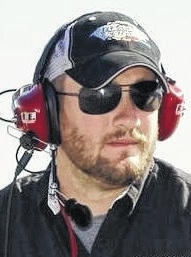If you are a regular reader of my column (and I would like to thank both of you), you know I am not one to heap praise on NASCAR or its sister company International Speedway Corporation (ISC); the company that owns the lion’s share of the tracks where they race. Not that they haven’t given me a bunch of stuff to gripe about over the years: that stupid wing on the cars from ’07 to ’09, the first 15 years that California Speedway, Rockingham and Wilkesboro, Lucky Dogs.
I could go on, but you get the point.
But I have to commend NASCAR and ISC for what they did at Daytona.
Over the two-and-a-half years, ISC embarked on a $400 million renovation project of the 2.5-mile track that hosted its first race in 1959. The additions included huge concourses with interactive displays, 1,400 television screens, 60 suites, 40 escalators and 17 elevators, and three times as many concession stands as before.
In a time when most racetracks have been removing seats due to a struggling economy and lagging attendance, Daytona went big. While they didn’t add seats (they actually took some 44,000 of the not-so-great seats away, leaving the capacity at 101,500), but the ones they replaced the old seats with were bigger and better. Some of the seats they took out were some of the original 1959 folding-chair-style anachronisms.
It is no longer a racetrack, according to Daytona’s people. It is a stadium. Now that does sound a little bit dumb. So does the new entrances name, “injectors,” but overall, I’m going to call this a win for NASCAR and its fans.
Fans expect an experience at the track. They want to be wowed from the time they come on they property until the time they leave. It’s more than just the spectacle on track (which, coincidentally, was pretty good in this year’s running of the 500).
Think about this in terms of other sports. NFL stadiums are the same way. AT&T Stadium, home of the Dallas Cowboys, is a marvel, so are the New Meadowlands in New Jersey and Levi’s Stadium, home of the San Francisco 49ers. In Atlanta, the Braves are moving out of a stadium that is 20 years old for new digs. So are the same city’s Falcons. That place is going to be amazing. And the name of game is experience for fans. An experience that makes them feel not quite so bad about shelling out a week’s salary for spending a few hours taking in a sporting event.
“You want to make the property — for lack of a better word — feel comfortable,” said Joie Chitwood, president of Daytona International Speedway. “A place where you can walk around and look at stuff and say, ‘Oh, that’s interesting,’ and you keep walking and look around the corner and see something else that’s interesting.”
Fans thought it was interesting. For the first time in eight years, the Daytona 500 was a sell out.
“It’s absolutely spectacular,” Dana Richardson, a fan from Atlanta, told USA TODAY Sports.
“I expected it to be really different but nothing like this,” she said. “The size of it is overwhelming, and the way it looks on the outside (from the street) makes it look like a work of art splashed across the stands.”
By all accounts, Daytona Rising was the brainchild of ISC CEO Lesa France Kennedy, who happens to be granddaughter of NASCAR founder, William “Big Bill” France.
“The redevelopment of Daytona International Speedway reaffirms its status as the ‘World Center of Racing’ for years to come,” said France Kennedy. “It is imperative that we build upon my grandfather’s vision to create a world-class facility with premium amenities to provide unparalleled experiences for our guests and partners. Doing so will ensure that the Daytona 500 and all our other events continue to drive our business while serving as a significant economic engine for the region.”
What may be most exciting for race fans is that Daytona may not be done improving.
“The goal is to continue to push the envelope,” Chitwood said. “I think the world center of entertainment is truly a possibility for us. It’s going to continue to be a fluid process. It has to be big and bold. It has to catch people’s attention. We’re thinking about what’s next, how else we can use the property.”
Couple the new fan experience with the fact that Denny Hamlin won in one of the closest-ever finishes in NASCAR history, the optimist in me believes this may be the corner that the sport needed to turn to beat the doldrums that has plagued big-time stock car racing for the past decade.
Andy Cagle writes a weekly column during the NASCAR season. He can be reached by email at andycagle78@gmail.com.


